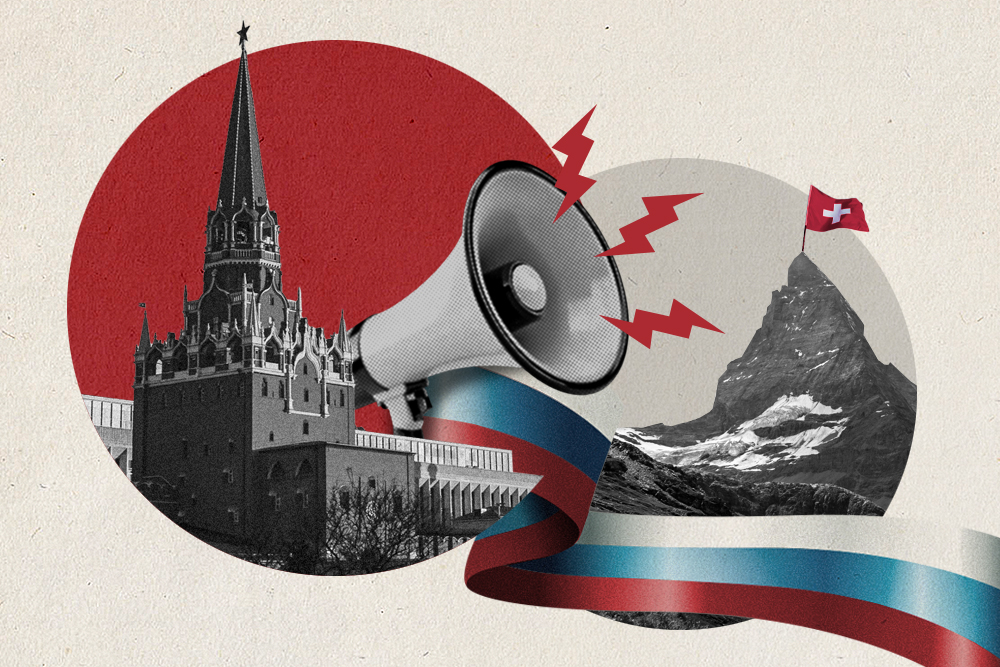No peace without oversight: monitoring Ukraine’s ceasefire

As talks of a potential ceasefire in Ukraine continue, the question of how to monitor and implement such an agreement is once again at the forefront. A Swiss expert in conflict resolution highlights the need for consensus on key elements of the agreement and its monitoring system.
A three-day ceasefire in Ukraine, unilaterally declared by Russian President Vladimir Putin last month, has started. It coincides with Russia’s preparations to mark Victory Day on Friday, commemorating the end of World War II. Ukrainian President Volodymyr Zelensky swiftly rejected the proposal when it was announced, insisting on the 30-day ceasefire backed by the United States.
A similar scenario unfolded in April when Russia declared a 30-hour Easter ceasefire. In the absence of bilateral consensus or clarity of what was agreed, both sides accused each other of violations.
Since the termination of the Organization for Security and Co-operation in Europe’s (OSCE) Special Monitoring Mission (SMM) in 2022 – after Russia vetoed the extension of its mandate following the full-scale invasion – Ukraine has had no formal international ceasefire monitoring system. The OSCE mission’s departure was abrupt, leaving many local staff in precarious situations.

More
Our weekly newsletter on foreign affairs
The limits of past monitoring
Between 2014 and 2022 the SMM, an unarmed civilian mission, was tasked with monitoring the Minsk AgreementsExternal link. Its work focused on logging and reporting ceasefire violations, often thousands a day. While this data added transparency, the reporting did little to change behaviour on both sides. Crucially, the mission lacked a clear mandate and a jointly agreed mechanism to ensure compliance, due in part to the need for consensus among OSCE member states, including Russia.
While the OSCE’s mission was a pioneering effort, its lack of a clear mandate limited its ability to ensure compliance. In their co-authored reportExternal link, Aly Verjee from the School of Global Studies at the University of Gothenburg and Valerie Sticher, a senior researcher at the Center for Security Studies at the federal technology institute ETH Zurich, argue that for any future monitoring effort to succeed, it must learn from these past shortcomings and implement a more robust framework.
According to Verjee and Sticher, clarity of the ceasefire agreement and a credible monitoring and verification mission can improve compliance, but modalities need to match the political realities on the ground and internationally. The researchers highlight three key elements needed for more effective future monitoring: a clear strategy, the ability to attribute violations, and a balanced use of technology.
‘Negotiated framework is essential’
The authors stress that a well-defined monitoring strategy based on a clear ceasefire agreement is essential for ceasefire compliance. Reflecting on the OSCE’s SMM, they note that although the mission eventually expanded to monitor both sides of the conflict, it lacked a clear and unified strategy and shared ownership by all parties. One result was that non-compliance was widespread, and there were few consequences for violators or incentives for parties to restore compliance.
For any future mechanism to succeed, Sticher argues, it must be built on a clear and jointly negotiated framework. “A clear, negotiated framework is essential – defining the ceasefire’s objectives and terms, clarifying what constitutes violations, and determining how they will be addressed. A framework has to be acceptable to, and accepted by, both sides,” she told SWI swissinfo.ch.

Sticher believes that the OSCE – the world’s largest regional security organisation with 57 member countries – may not be the ideal candidate for future monitoring efforts, given Ukrainian scepticism surrounding its previous monitoring mission. “In my view, it’s difficult to see an existing organisation that could easily take over such a job. It might require a new institutional framework or a coalition of the willing, though at the end of the day it will have to be a pragmatic decision of who is acceptable to both parties.”
Verjee and Sticher argue that monitoring efforts must go beyond tallying violations to actually seeking to restore compliance through a jointly shared mechanism that holds violators accountable. The OSCE’s former mission lacked the authority to assign blame, limiting its impact.
For future mechanisms to be effective, there must be clear rules for identifying, attributing and responding to violations. However, such mechanisms alone will be ineffective if the parties lack genuine commitment to a ceasefire. Russia’s repeated violations of international law and numerous broken ceasefire agreements demonstrate that, without real political will on both sides, monitoring and verification efforts are unlikely to succeed.
Sticher underscores that mutual consent is essential. A joint commission involving both parties could also help manage minor breaches and reduce the risk of escalation, she says.
Role of Switzerland
The SMM was a pioneer in using drones, cameras, and acoustic sensors to extend its observational capacity across conflict zones. These tools allowed the mission to collect data in areas that were otherwise inaccessible or too dangerous for field teams.
However, Verjee and Sticher stress in the report that technology should be used strategically, not to track every minor incident, but to focus on significant violations that affect the ceasefire’s stability.
As an OSCE member, Switzerland has contributed both personnel and funding to ceasefire monitoring in Ukraine. As a neutral country, Switzerland has a long tradition of supporting peace processes and monitoring ceasefires, including its ongoing role on the Korean Peninsula since 1953. In 2024, the Alpine nation hosted the Summit on Peace in Ukraine, signalling its readiness to mediate the conflict and its commitment to European security.
“Switzerland is very well positioned to play a role,” says Sticher . “It has expertise in ceasefires and their monitoring, from both the military and civilian sides. And this is the kind of engagement Switzerland has traditionally been involved in.”
More
Edited by Marc Leutenegger/ts,ac

In compliance with the JTI standards
More: SWI swissinfo.ch certified by the Journalism Trust Initiative















You can find an overview of ongoing debates with our journalists here . Please join us!
If you want to start a conversation about a topic raised in this article or want to report factual errors, email us at english@swissinfo.ch.